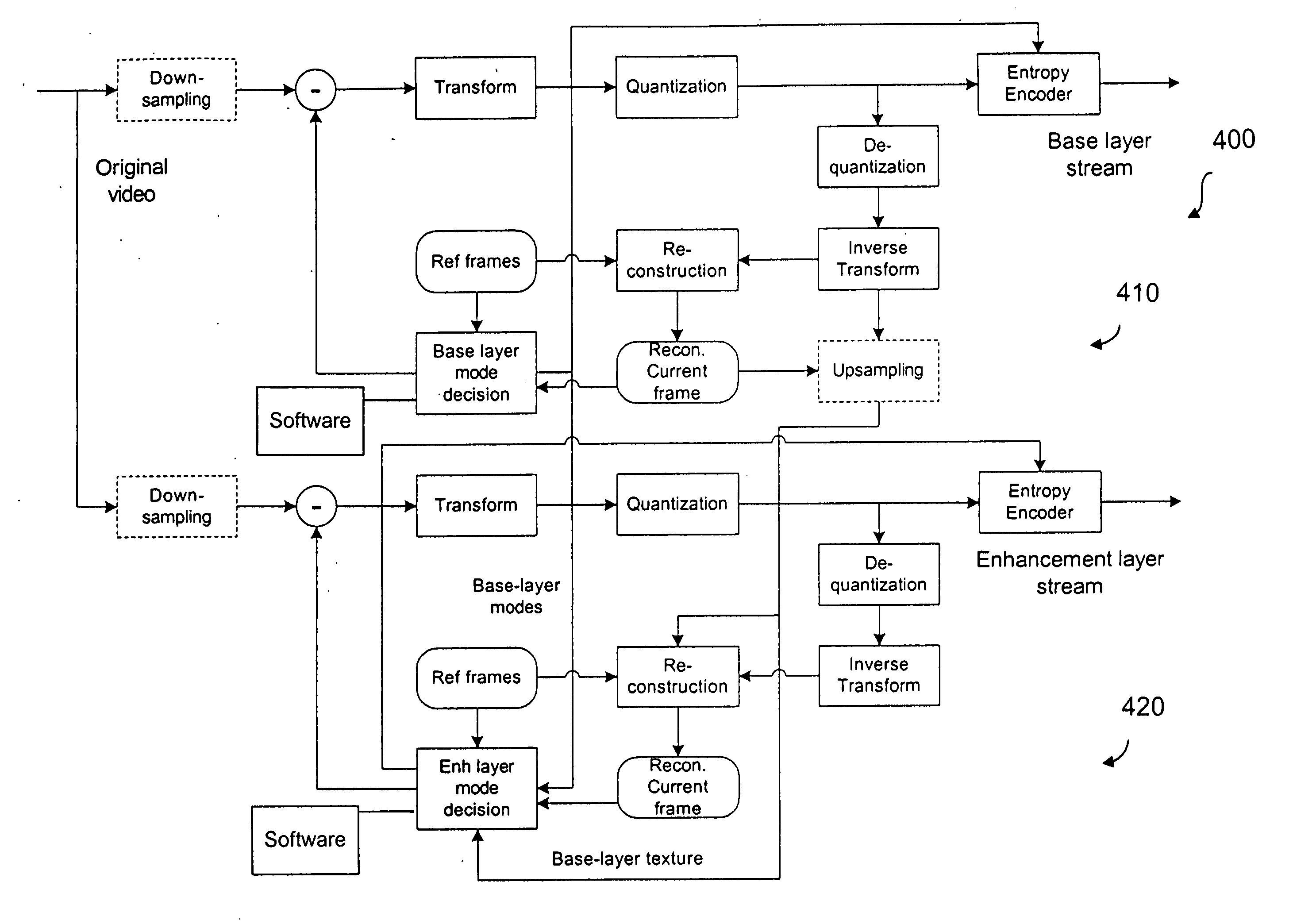Inter-layer coefficient coding for scalable video coding
a video sequence and coefficient technology, applied in the field of video coding, can solve the problem that the standard does not provide a mechanism for transmitting or decoding the video sequence at a different bit rate setting, and achieve the effect of better pixel predictors
- Summary
- Abstract
- Description
- Claims
- Application Information
AI Technical Summary
Benefits of technology
Problems solved by technology
Method used
Image
Examples
Embodiment Construction
[0041] In the discussion below, a base layer may be the absolute base layer, possibly generated by a non-scalable codec such as H.264, or it may be a previously-encoded enhancement layer that is used as the basis in encoding the current enhancement layer. The term “coefficient” below refers to a quantized coefficient value.
General Encoding Hierarchy in H.264
[0042] H.264 encodes the quantized coefficients in the hierarchy described blow. [0043] 1. An image or a video frame is partitioned into macroblocks (MB). An MB consists of 16×16 luminance block, 8×8 chrominance-Cb block, and 8×8 chrominance-Cr block. An MB skipping flag is sent in this level if all the information of this macroblock can be inferred from the information that is already encoded, by using pre-defined rules. [0044] 2. If the macroblock is not skipped, Coded Block Pattern (CBP) is sent to indicate the distribution of the nonzero coefficients in the macroblock. [0045] 3. After CBP is encoded, a coded block flag is ...
PUM
 Login to View More
Login to View More Abstract
Description
Claims
Application Information
 Login to View More
Login to View More - R&D
- Intellectual Property
- Life Sciences
- Materials
- Tech Scout
- Unparalleled Data Quality
- Higher Quality Content
- 60% Fewer Hallucinations
Browse by: Latest US Patents, China's latest patents, Technical Efficacy Thesaurus, Application Domain, Technology Topic, Popular Technical Reports.
© 2025 PatSnap. All rights reserved.Legal|Privacy policy|Modern Slavery Act Transparency Statement|Sitemap|About US| Contact US: help@patsnap.com



